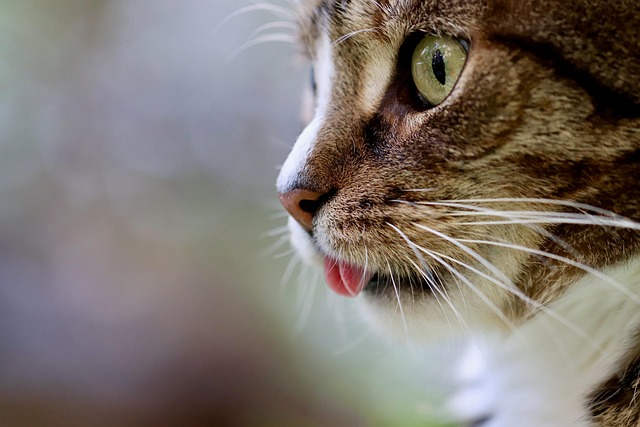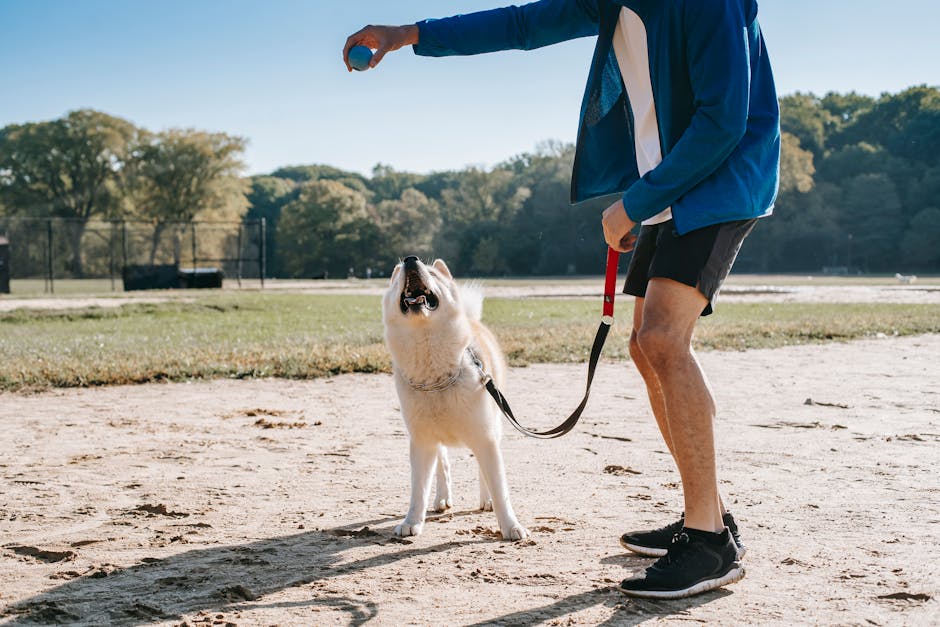Why Train Your Cat?
Let’s clear the air: cats can be trained. The myth that they’re too independent or aloof to learn is tired and wrong. Cats aren’t tiny wild animals living in your house—they’re intelligent, perceptive, and surprisingly suited to structured, reward-based training. Dogs don’t corner the market on behavior shaping.
Training a cat isn’t about circus tricks or obedience drills. It’s about creating clarity. When cats understand what’s expected—and what earns them rewards—they act with more confidence. That confidence shows up in how they navigate your home, how they handle stress, and how they relate to you. A cat that knows how to sit on cue is often the same cat that shows less fear at the vet or settles into a carrier without a fight.
More importantly, training is a form of communication. Positive reinforcement—offering something the cat values when they do the right thing—builds a bond that’s based on trust. Not dominance. Not fear. You’re showing your cat that you’re predictable, safe, and worth listening to. And that goes a long way when you’re trimming claws or calling them out from under the bed.
Training isn’t just possible—it’s one of the best tools you have to raise a calmer, happier, and more connected cat.
Understanding Positive Reinforcement
Positive reinforcement isn’t just a feel-good idea—it’s a method rooted in solid behavioral science. At its core, it’s about consistently rewarding the actions you want to see more of. Do the behavior, get something good, and do the behavior again. It’s that simple. No gimmicks, no mind games.
Here’s the basic loop: behavior → reward → repeat behavior. Your cat touches the scratch post instead of the couch? They get a treat. They sit still for a nail trim? They get praise or a favorite toy. Over time, that behavior sticks, not because you forced it, but because it pays off for them.
Now, here’s what positive reinforcement is not: bribery or trickery. It’s not letting your cat have their way in hopes they’ll behave. And it’s definitely not punishment. That route often backfires—fear and confusion creep in, and the trust you’re trying to build gets shredded. Punishment can stop a behavior in the moment, sure, but it doesn’t teach what to do instead. Worse, it can damage your bond with your cat. Cats aren’t stubborn—they’re just not wired to respond well to threats.
Use rewards to guide behavior, and skip the scolding. You’re not trying to dominate your cat—you’re teaching them how to live with you on good terms. The win comes when they choose the right thing because they want to, not because they’re scared of what happens if they don’t.
Choosing the Right Rewards
Not all treats are created equal—and if your cat isn’t motivated, training stalls fast. High-value treats are the currency of cat training. What counts as “high value”? Think small, smelly, and irresistible. Freeze-dried chicken, soft salmon bites, or even bits of tuna work well. Dry kibble doesn’t usually cut it unless your cat is obsessed. The key is to test and find what makes your cat drop everything.
But food isn’t the only reward. Some cats go nuts for chin scratches, laser pointers, or favorite toys. Praise in a calm, pleasant voice can work too, though it usually needs to be paired with a physical or edible reward at first. Over time, affection and attention can become strong motivators on their own.
Whatever reward you’re using, timing is everything. Deliver it immediately—like, within two seconds—after the desired behavior. The quicker the feedback, the clearer the message. Wait too long, and your cat won’t connect the dots. Cats learn by association, and if the reward isn’t tied to the action, the training doesn’t stick.
In short, good treats, meaningful praise, and perfect timing. That trio keeps your cat engaged and your sessions effective.
Top Behaviors You Can Train with Positive Reinforcement
Training your cat doesn’t have to be limited to cool tricks—daily behaviors that make your home calmer and your bond stronger are all within reach. Here are some of the most practical and rewarding behaviors you can teach using positive reinforcement.
Litter Box Consistency
Struggling with litter box habits? Training can make a real difference:
- Reward use immediately: Keep treats nearby so you can reinforce behavior seconds after your cat uses the box.
- Keep the box clean: A dirty litter box can undo training progress fast.
- Rule out health issues: If there’s regression, check with a vet first.
Using a Scratching Post
Instead of punishing furniture scratching, reward good choices:
- Introduce posts strategically: Place them near favorite scratching spots.
- Use treats or catnip to attract interest.
- Reward immediately after they use the post, not while approaching it.
Coming When Called
Yes, cats can learn their name or a specific cue word:
- Use a consistent sound or word—like a click, whistle, or verbal cue.
- Reward with a top-tier treat every time your cat responds.
- Practice in short, focused sessions, gradually adding distance and distraction.
Allowing Nail Trims or Vet Handling
Make necessary handling less stressful:
- Break the process down: Start with touching a paw, then holding it, then introducing the clippers.
- Reward each tiny step, not just the final trim.
- Go slow and stop if your cat shows signs of fear—building tolerance takes time.
Sitting or Staying in Carriers Calmly
Help your cat feel safe and even comfortable inside their travel crate:
- Leave the carrier open at home to reduce negative associations.
- Toss treats or toys inside to encourage exploration.
- Reward calm behavior—never force your cat into the carrier.
Training these behaviors not only makes life with your cat easier—it also builds lasting trust. Tailor the pace to your unique pet, and celebrate small wins along the way.
Step-by-Step: Training Sessions That Work
Training your cat is less about long hours and more about smart, structured consistency. To set you and your feline up for success, follow these proven techniques to build effective and enjoyable training sessions.
Keep It Short and Sweet
Cats have short attention spans, so training sessions should be brief but focused.
- Limit each session to 5–10 minutes
- Always end on a positive note (a successful behavior or an extra treat)
- Multiple short sessions per day are more effective than one long session
One Behavior at a Time
Trying to teach too much at once can confuse your cat and slow progress.
- Focus on a single behavior per session
- Reinforce one clear goal to avoid mixed signals
- Move to the next behavior only once the current one is reliably learned
Use Clear Markers for Success
Establish a consistent signal that tells your cat, “Yes, you did the right thing!”
- Use a clicker or a verbal cue like “yes!” immediately after the desired action
- Pair the marker with a reward (treat, praise, or toy)
- Timing is key—mark the behavior the moment it happens
Consistency Builds Habits
Cats thrive on routine, and training is no different.
- Practice daily, even if only for a few minutes
- Repeat the same cues and rewards every time
- Make sure all family members use the same words and actions
Well-structured sessions are the foundation of any positive reinforcement plan. By keeping things short, focused, and consistent, you’ll help your cat learn faster—and enjoy the process too.
Avoiding Common Mistakes
Even with the best intentions, it’s easy to trip up when training your cat. Here are four common mistakes—and how to avoid them.
First up: skipping steps or rushing progress. Cats need time to connect the dots. If you push too fast—asking for a full trick before your cat masters the basics—you’ll get confusion or avoidance instead of steady growth. Keep things bite-sized. One small success builds on the last.
Next, inconsistent reward delivery. Timing and repetition are key. If you miss the moment or reward randomly, your cat won’t know what they did right. Mark the behavior immediately (with a clicker or verbal cue), then give the reward. Do it the same way, every time.
Then there’s accidentally reinforcing unwanted behaviors. Giving a treat when your cat meows non-stop during training? You just taught them that vocal demand = food. Stay alert. Only reward the behaviors you want more of.
And finally, remember: every cat learns at their own pace. Some pick it up in a few days. Others take weeks. That’s normal. Be patient. Training isn’t about speed—it’s about clarity, consistency, and trust. When in doubt, slow down and keep it simple.
Troubleshooting: When Progress Stalls
Training isn’t always linear. Sometimes your cat will stop responding to cues they previously nailed. Don’t panic—it doesn’t mean you failed or that the behavior is lost forever. It likely just needs a quick reset.
Go back a few steps in the training sequence. Break the exercise down and reward the smallest effort again. If your cat once came on command but now ignores it, start by rewarding them for just looking when you say their name. Rebuild the habit slowly to rebuild confidence.
If motivation drops, reassess your reward. Treats that wowed last week might be boring now. Cycle in new flavors or use something else your cat values—playtime with a favorite toy or access to a cozy spot they love. Variety keeps engagement up.
Also watch for signs your cat isn’t just bored—they could be stressed or overstimulated. Flattened ears, flicking tail, hiding, or walking away mid-session are all indicators. If you see these, stop the session. Give them a break. Sometimes the best progress comes after a short pause.
Keep expectations realistic. They’re cats, not machines. Flexibility, patience, and consistency are your power trio when things stall.
Reinforcement Beyond Treats
Training doesn’t stop when the treat bag goes back in the drawer. In fact, some of your best tools are already built into your daily routine. Creating a household full of “yes” moments means actively looking for opportunities to reward the behaviors you want—even outside formal training sessions. When a cat hops off the counter when asked? That’s a big “yes”—pull the blinds so they can birdwatch. Went to their scratching post instead of the couch? That’s a win—toss their favorite toy.
Environmental rewards are low-effort and high-impact. Things like opening a window, releasing a feather wand, or letting your cat into their favorite nook can all reinforce good behavior. These don’t require extra planning—just awareness. When your cat does something you like, ask yourself: what can I offer right now that they’ll love?
Everyday life is packed with potential reinforcers. Feeding time, play breaks, lounging near a sunny window—these can all be turned into training moments. You’re not just teaching tricks; you’re weaving better habits into the fabric of home life. When a cat comes to expect that good choices lead to enjoyable outcomes, they’ll make more of them. No shouting, no scolding. Just clarity, consistency, and yes-worthy moments.
Curious why your cat acts out in certain ways?
Even with positive reinforcement in play, cat behavior can sometimes seem random—or just plain difficult. That’s when it helps to take a step back and look at what’s driving those actions. Scratching the couch, peeing outside the litter box, sudden aggression—it’s usually not about being “bad.” It’s a signal. Stress, environmental changes, boredom, even medical issues can all show up as unwanted behavior.
Before you assume your training has failed, it’s worth understanding the root of what’s going on. You can read more about common issues—and how to actually fix them—in this guide: Common Pet Behavior Issues and How to Correct Them. Sometimes the smartest training move is knowing when to shift strategies.
Final Notes: What Success Looks Like
Training a cat isn’t about instant results or flashy tricks—it’s small wins stacked over time. Set realistic expectations. Your cat may not be doing backflips on command, but consistently using the litter box, walking into a carrier without a fight, or responding to their name? That’s progress. Celebrate it.
You’ll know your cat is into it if they’re showing up with curiosity. Look for forward ears, slow blinks, approaching you during session time, or even pawing at the treat pouch when you pull it out. An engaged cat will participate willingly, even if the progress is slow. If their body language shifts to tension or avoidance, it’s time to pause and reassess.
Training never really ends—it just evolves. The most successful routines are steady, low-pressure, and built into daily life. A couple minutes here and there. Calm tone. Simple cues. Lots of praise. Over time, consistency beats intensity. You don’t need a perfect session—just a consistent one. Learning is a process, not a performance.


 Norvella Neythanna is the co-founder and author at pethubnest She blends her passion for pets with her interest in technology, covering innovative products and ideas that transform pet care.
Norvella Neythanna is the co-founder and author at pethubnest She blends her passion for pets with her interest in technology, covering innovative products and ideas that transform pet care.


